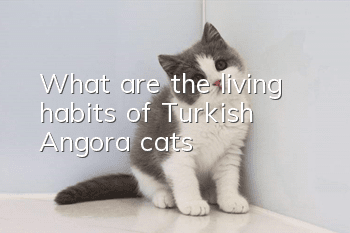Are elderly cats susceptible to joint disease? Symptoms of joint disease in pet cats

Arthropathy is a chronic disease that the owner may not care about in the early stage. Occasional inactivity or abnormal walking posture are often ignored, but if the abnormality is really caused by arthrosis, It may not be easy to treat until it is actually noticed. Of course, the joints not only affect the cat’s walking posture, but may also cause a series of functional disorders.
Some people may think that the probability of cat joint disease is extremely small and generally does not occur. In fact, this statement is one-sided. For young cats, they may not be troubled by joint disease because they are strong and healthy, but Scientific research has found that 30% of cats over eight years old suffer from the pain caused by arthritis, so sometimes the limp of elderly cats cannot be taken for granted, despite how aging affects the body. performance, but if you really think about the cat’s health, it’s better to check it out.
There is no doubt that there are many causes of joint disease, such as nutrition metabolism, inflammation caused by trauma, etc., and the degree of joint disease caused by different causes is different, some are just lame, and some may be paralyzed. . Take cat deformity joint disease as an example. This is a relatively mild joint disease. Although it is less likely to occur in cats, it should not be underestimated.
1. Symptoms
Staged or persistent lameness and unwillingness to move. Lameness improves during activity; claudication worsens after strenuous activity, especially after a period of rest. The frequency and severity of pain and claudication increase as the disease progresses. The joints are not flexible, there is pain during movement and palpation, and the joints are swollen with effusion.
2. Diagnosis
Usually based on medical history, clinical examination results and characteristic X-ray signs. Clinical examination may reveal pain in the affected joints, reduced range of joint motion, crepitus when extending and flexing the joints, and (possibly) joint swelling. The key to identifying pain in your cat is to check for changes in his or her lifestyle, which are often caused by mobility issues and may include a reluctance to jump or an inability to jump as high as before, as well as a decrease in the cat's overall activity level, such as being more lethargic. , and played less.
3. Treatment
(1) Limiting activities or regularly spaced activities can control clinical symptoms.
(2) Apply drug treatment to reduce clinical symptoms:
①Aspirin, 10-25mg/kg, orally, 2-3 times a day;
② Chlorcarbazole propionate, 2.2 mg/kg, orally, 2 times a day; phenylbutazone, 13 mg/kg, orally, 2-3 times a day, up to 800 mg a day, not for cats;
③Corticosteroids such as splashingNisone, 1-2mg/kg, taken orally, 2-3 times a day, gradually reduced to 0.25mg/kg. While using the above drugs, give cimetidine, 5-10 mg/kg, orally, 3 times a day to prevent gastric ulcers.
(3) Surgical treatment: Joint replacement or arthroplasty can effectively reduce pain and restore limb function.
- Will the cat recognize its owner again?
- Can cats eat fried peanuts?
- Is it normal for a two-month-old kitten to shed tears?
- The importance of vitamin C to cats. Do exotic shorthair cats need to supplement vitamin C?
- Why do cats always like to lick their own fur?
- What do Balinese cats eat? What are the eating habits of Balinese cats?
- Knowledge in pet cat litter box
- What does cat diarrhea look like?
- Why do kittens love to lick people?
- Can cats and dogs eat canned food?



